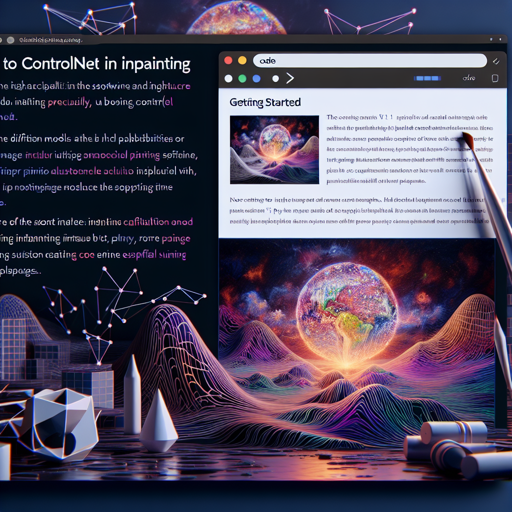ControlNet v1.1 is a powerful tool that enhances the capabilities of diffusion models, particularly for image inpainting. In this blog post, we will guide you on how to set up and utilize ControlNet v1.1, combined with the Stable Diffusion model, to generate stunning images. So, grab your coding gear and let’s get ready to paint!
Getting Started
ControlNet v1.1 was released by Lvmin Zhang and provides users with additional control over generative models through feature conditioning. It’s particularly handy when working with inpainting projects.
Installation Steps
To begin using ControlNet, follow these quick installation steps:
- Ensure you have Python and pip installed on your machine.
- Install the essential packages by running:
$ pip install diffusers transformers accelerateRunning the Code
We can set up the ControlNet for inpainting through an easy Python script. Think of this as ordering a pizza. The ingredients you choose will determine what kind of pizza you’ll end up with!
In our case:
- Order Your Base: The base being the Stable Diffusion model.
- Add Ingredients: These ingredients represent various parameters like the initial image, mask, and control images.
- Finalize the Order: Running the pipeline to get your delicious inpainted pizza!
Sample Code
Here’s how to set everything up:
from diffusers import StableDiffusionControlNetInpaintPipeline, ControlNetModel
from diffusers.utils import load_image
import numpy as np
import torch
# Load images
init_image = load_image("https://huggingface.co/datasets/diffusers/test-arrays/resolve/main/stable_diffusion_inpaint/boy.png")
mask_image = load_image("https://huggingface.co/datasets/diffusers/test-arrays/resolve/main/stable_diffusion_inpaint/boy_mask.png")
# Prepare image for inpainting
def make_inpaint_condition(image, image_mask):
image = np.array(image.convert("RGB")).astype(np.float32) / 255.0
image_mask = np.array(image_mask.convert("L")).astype(np.float32) / 255.0
image[image_mask > 0.5] = -1.0 # Masking pixels
return torch.from_numpy(np.expand_dims(image, 0).transpose(0, 3, 1, 2))
# Generate Control Image
control_image = make_inpaint_condition(init_image, mask_image)
# Load ControlNet and Pipeline
controlnet = ControlNetModel.from_pretrained("lllyasviel/control_v11p_sd15_inpaint", torch_dtype=torch.float16)
pipe = StableDiffusionControlNetInpaintPipeline.from_pretrained("runwayml/stable-diffusion-v1-5", controlnet=controlnet, torch_dtype=torch.float16)
# Create image
image = pipe("a handsome man with ray-ban sunglasses", num_inference_steps=20, generator=torch.Generator(device="cpu").manual_seed(1), image=init_image, mask_image=mask_image, control_image=control_image).images[0]Troubleshooting Tips
While using ControlNet, you might encounter some hiccups. Here are some troubleshooting ideas:
- If you experience issues with package installations, ensure your pip is updated.
- Network errors? Make sure your internet connection is stable and retry again.
- For any runtime errors, check the image links to ensure they are accessible.
- For more insights, updates, or to collaborate on AI development projects, stay connected with fxis.ai.
At fxis.ai, we believe that such advancements are crucial for the future of AI, as they enable more comprehensive and effective solutions. Our team is continually exploring new methodologies to push the envelope in artificial intelligence, ensuring that our clients benefit from the latest technological innovations.
Conclusion
Using ControlNet with Stable Diffusion opens up exciting possibilities for image manipulation. Whether you are enhancing an image or filling in blanks, ControlNet is a robust tool that combines ease-of-use with powerful outputs. Dive in and start creating your customized images today!

